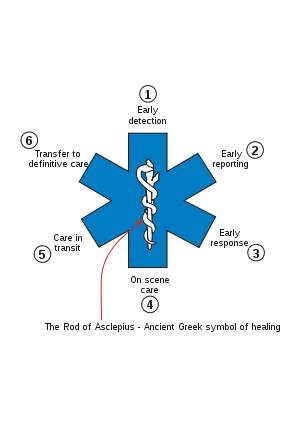It pays to keep first aid kits in your car, home, and at work. Generally, all workplaces have well-stocked first aid kits. Kits should be full of supplies that are appropriate for location and planned activities. It is a good idea for coaches of all sports for youngsters to keep a first aid kit at practice and games, and to know how to administer first aid. Persons planning a fishing trip or camping trip may wish to fill their own kits or purchase first aid kits with basic supplies, such as:
- Bandages
- Alcohol pads
- Dressings
- Soap
- Saline
- Tweezers
- Disposable gloves
- Over the counter pain medications
- CPR pocket mask or face shield
- Aloe Vera gel
The International Organization for Standardization (ISO) sets the standard emblem that is on first aid kits: some are green with a white cross, while others use a red cross on a white background. The Star of Life is associated with emergency medical services, to indicate their service, which offers appropriate care. The six branches of the star are symbols of the six main tasks executed by rescuers through the emergency chain:

At work, be sure you know where the first aid kits are located and take a course in first aid if it is offered at your place of employment. You never know when you may need it. If you are going on a trip, it may be the most important thing you take with you.
Source for Star of Life: Wikipedia